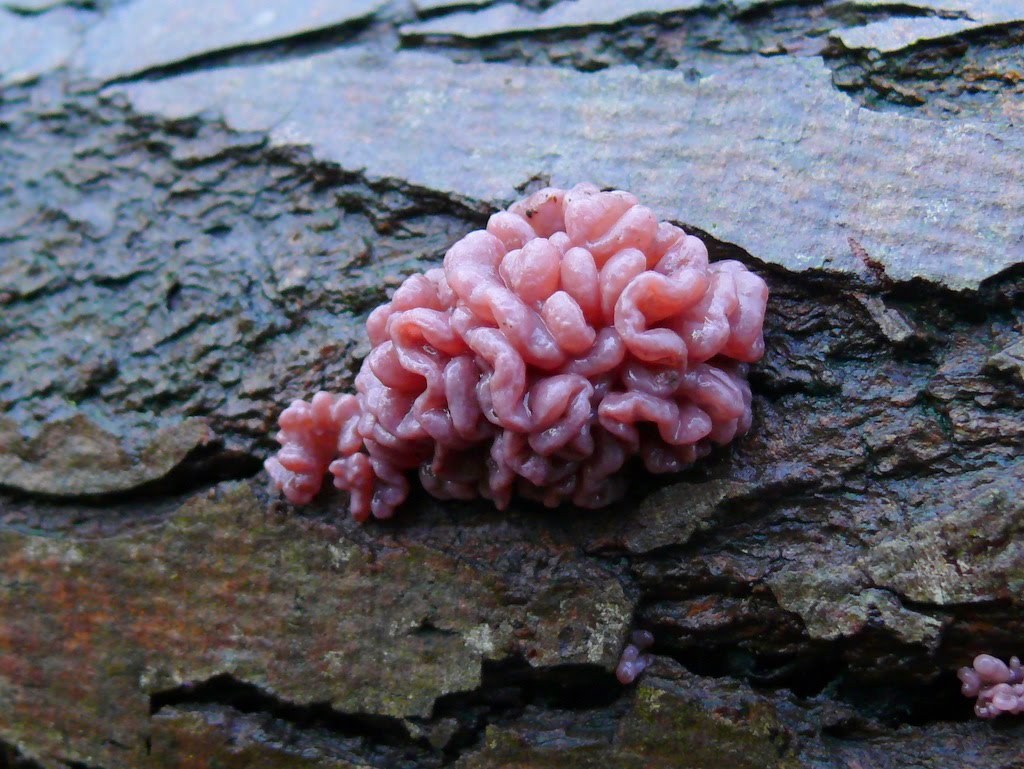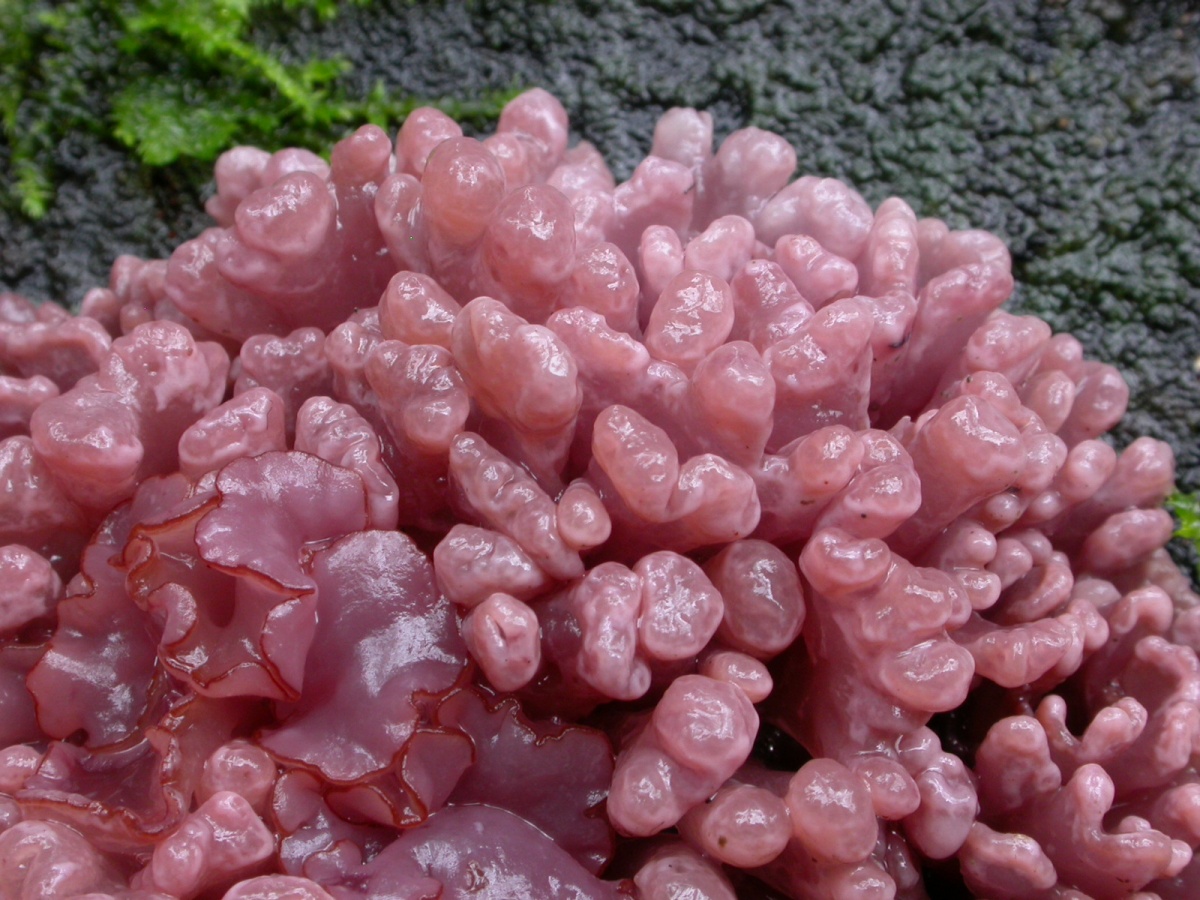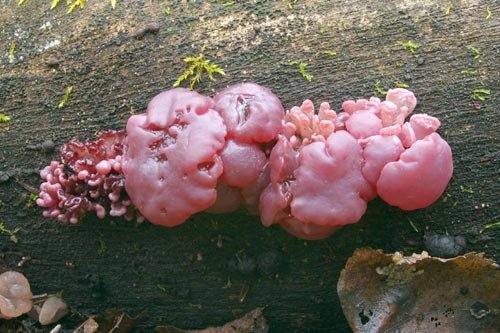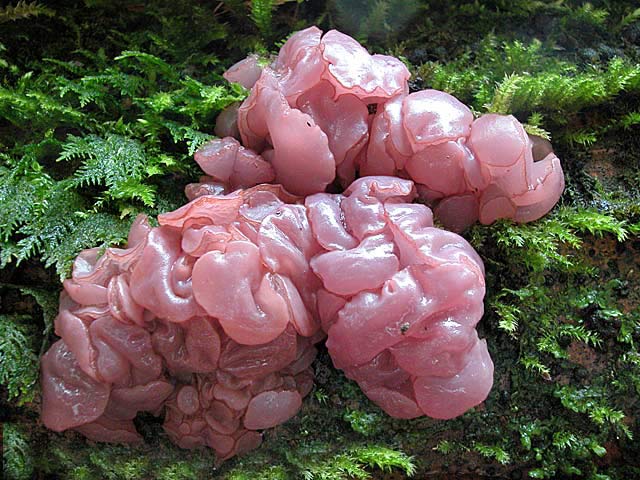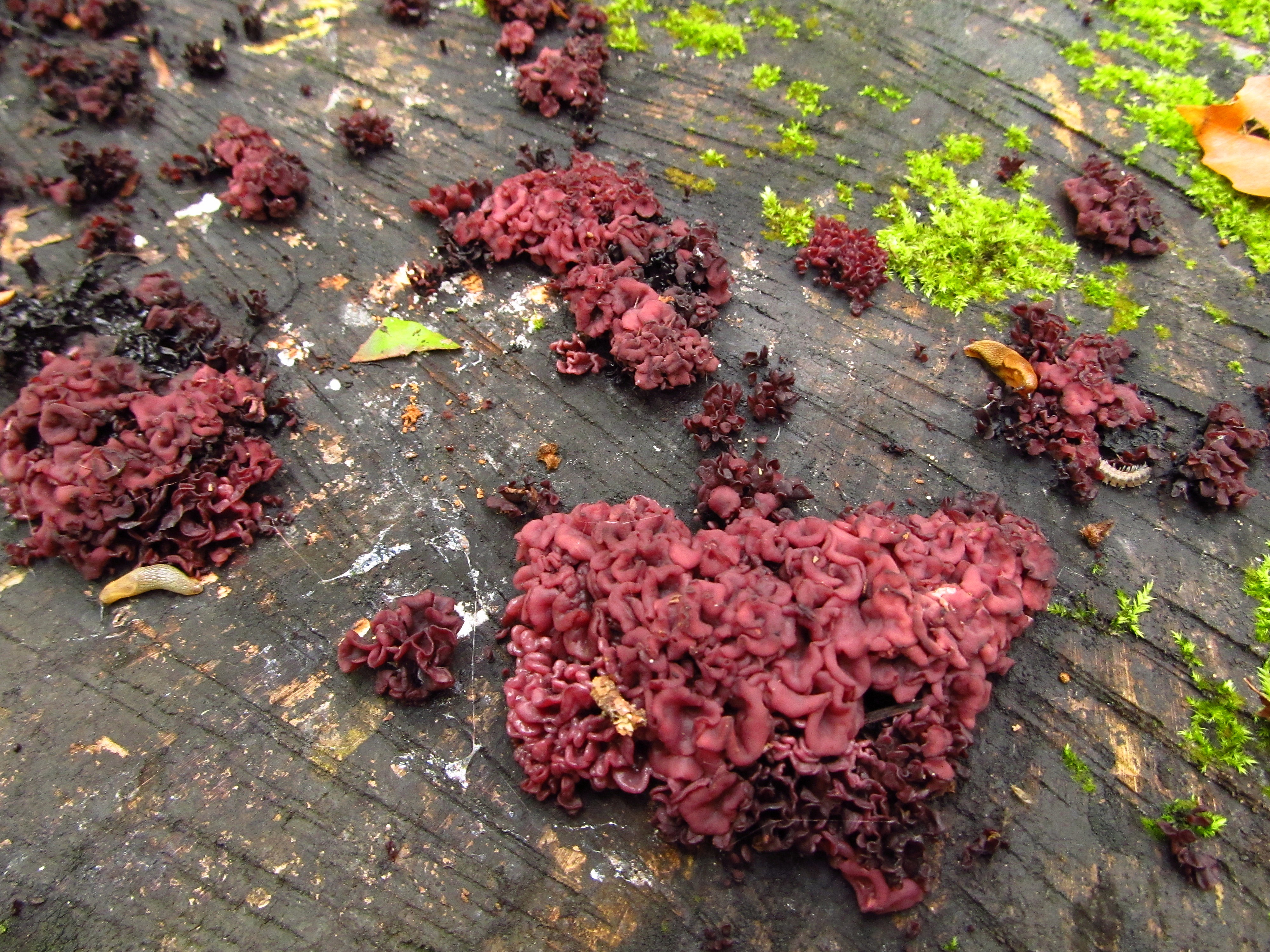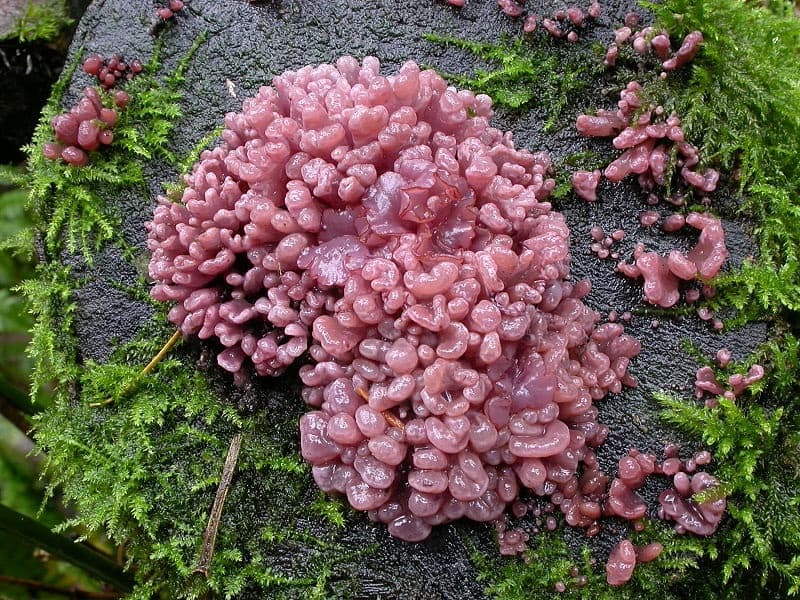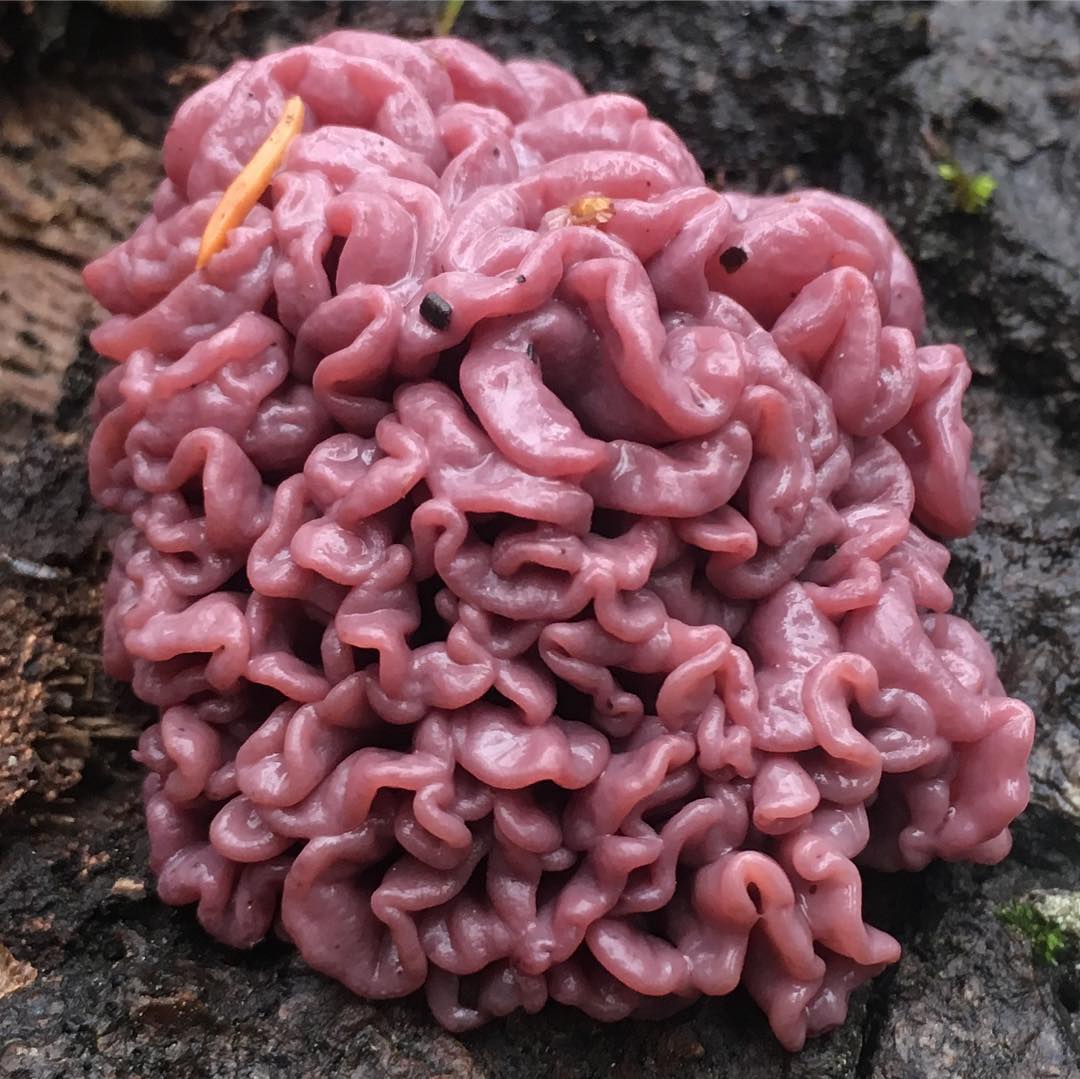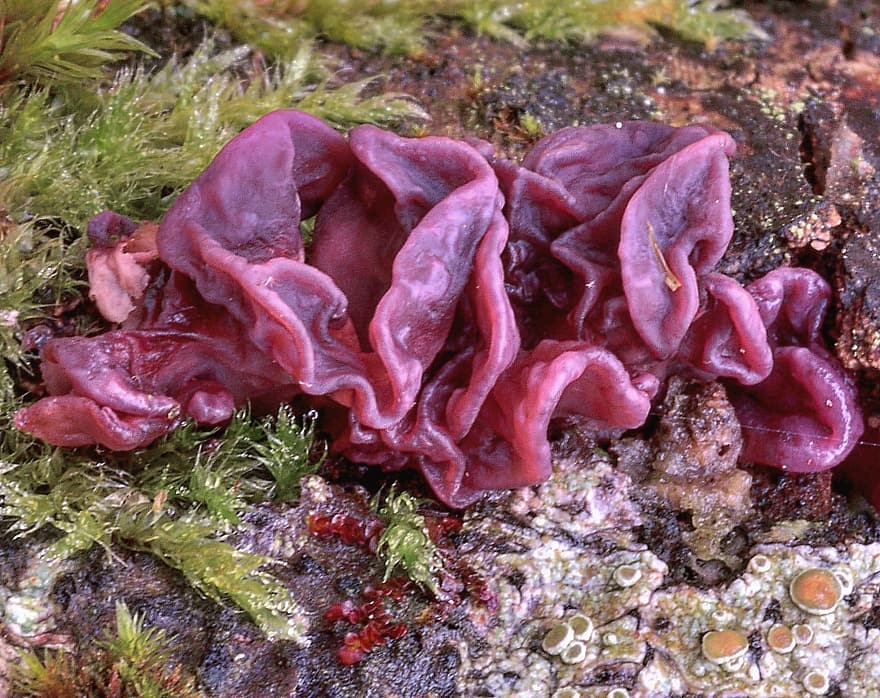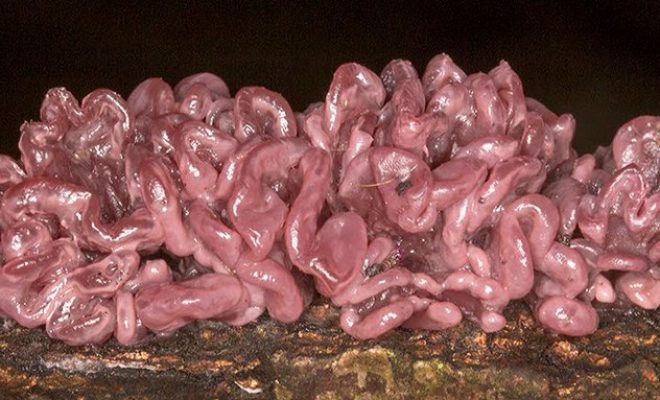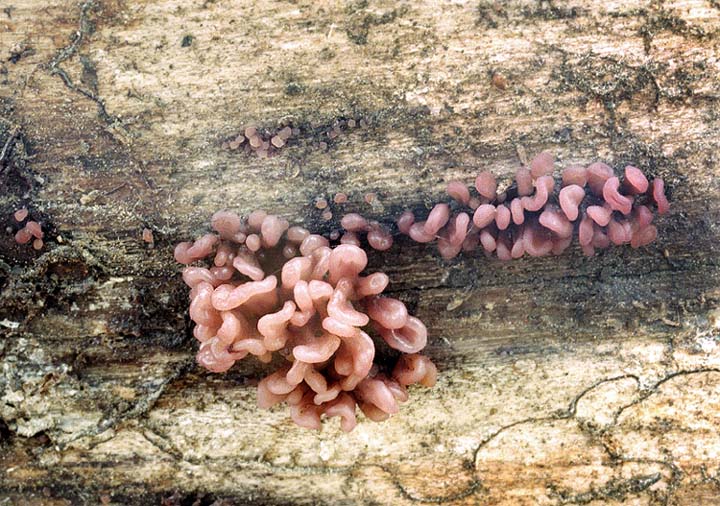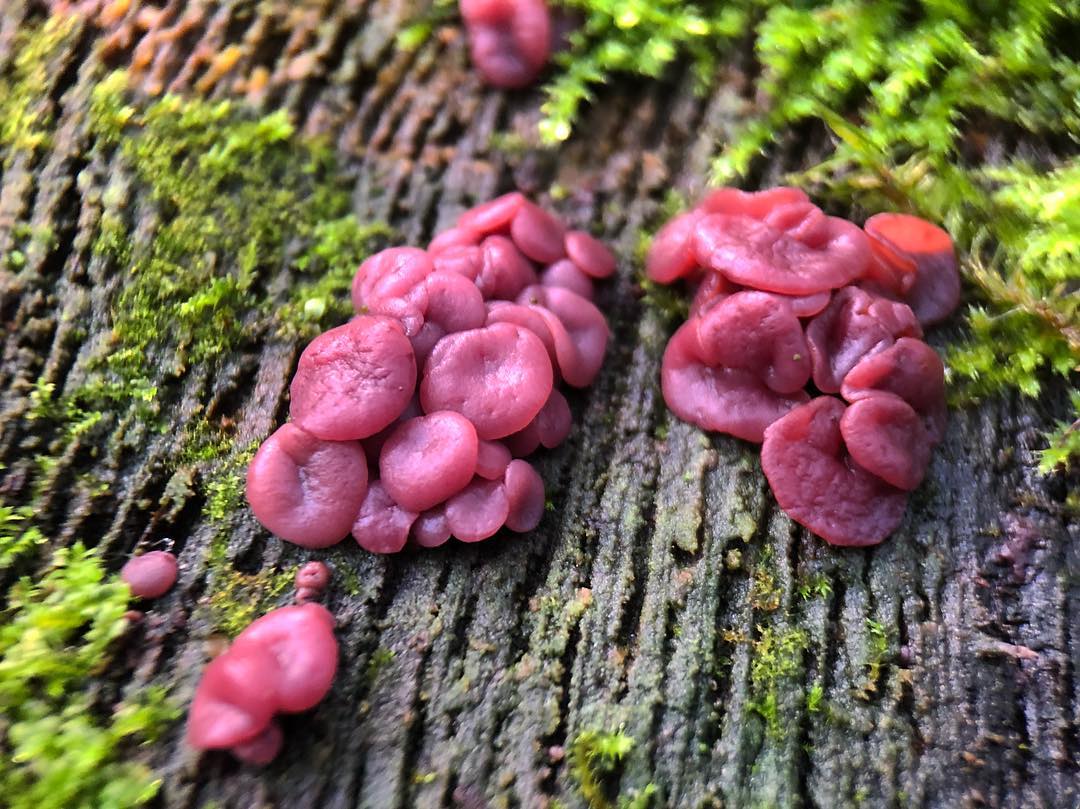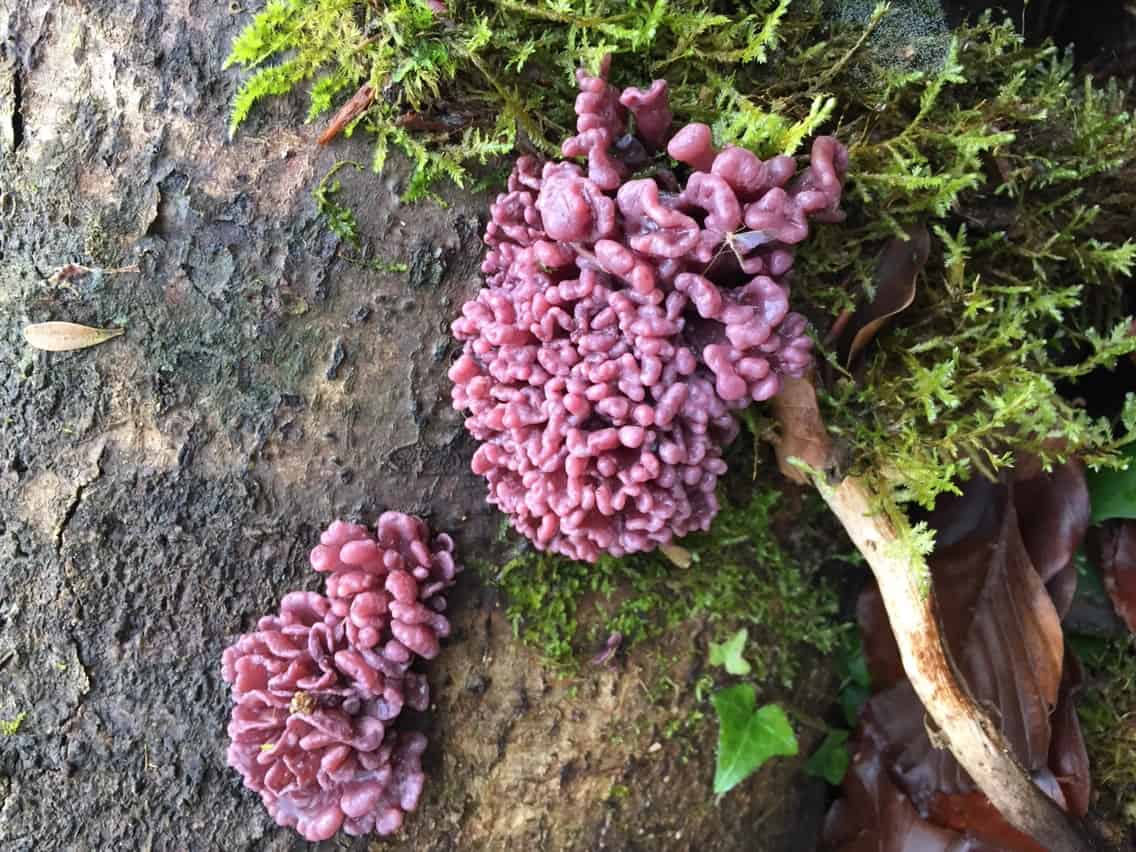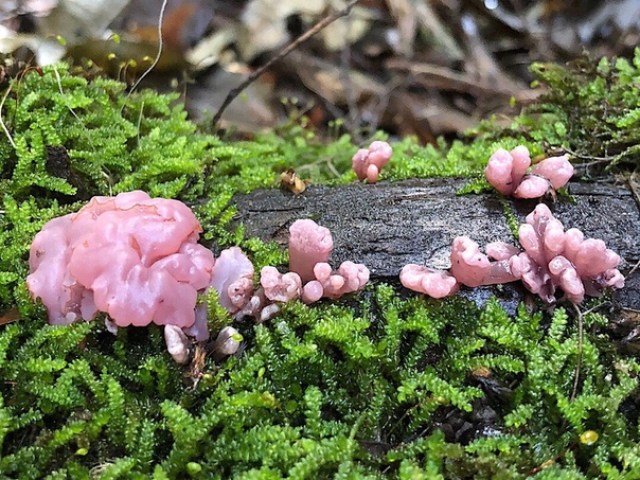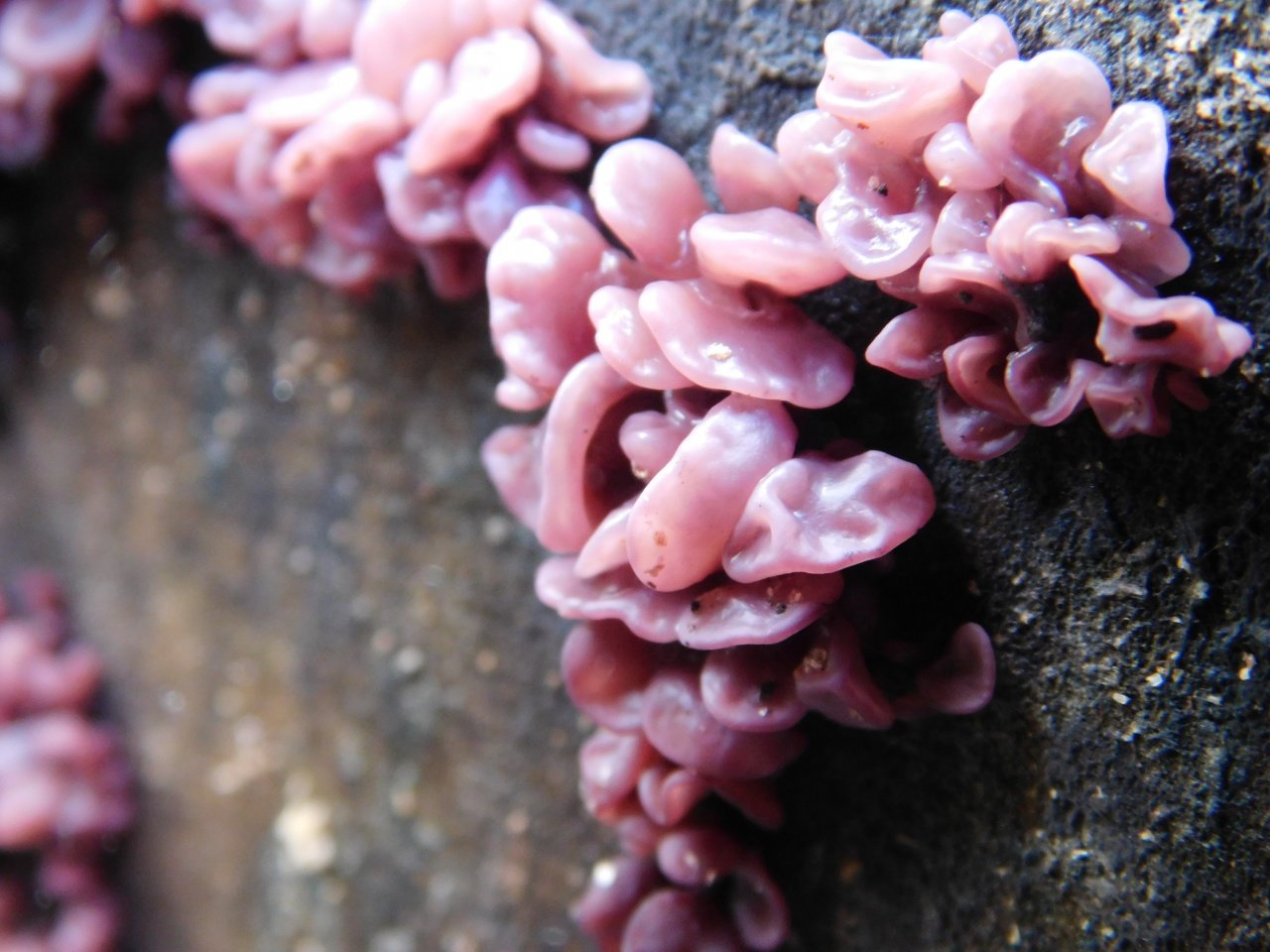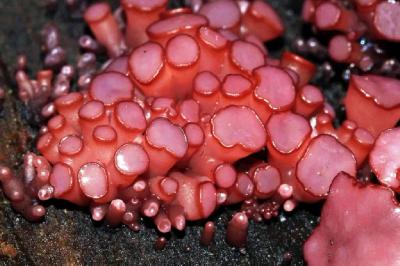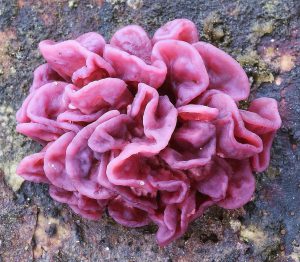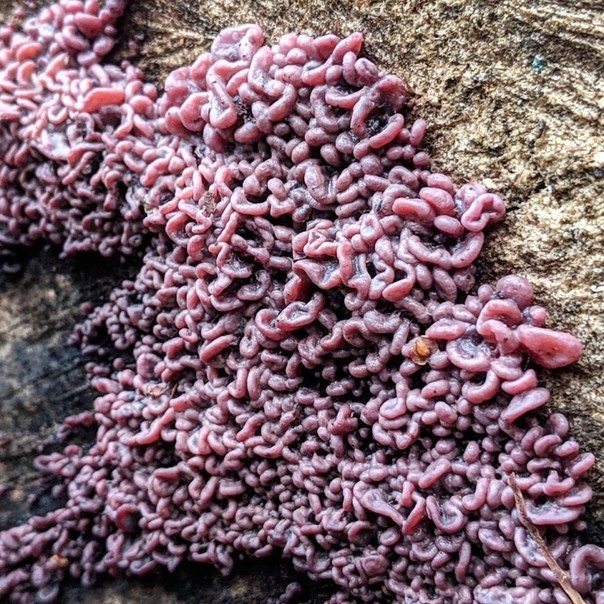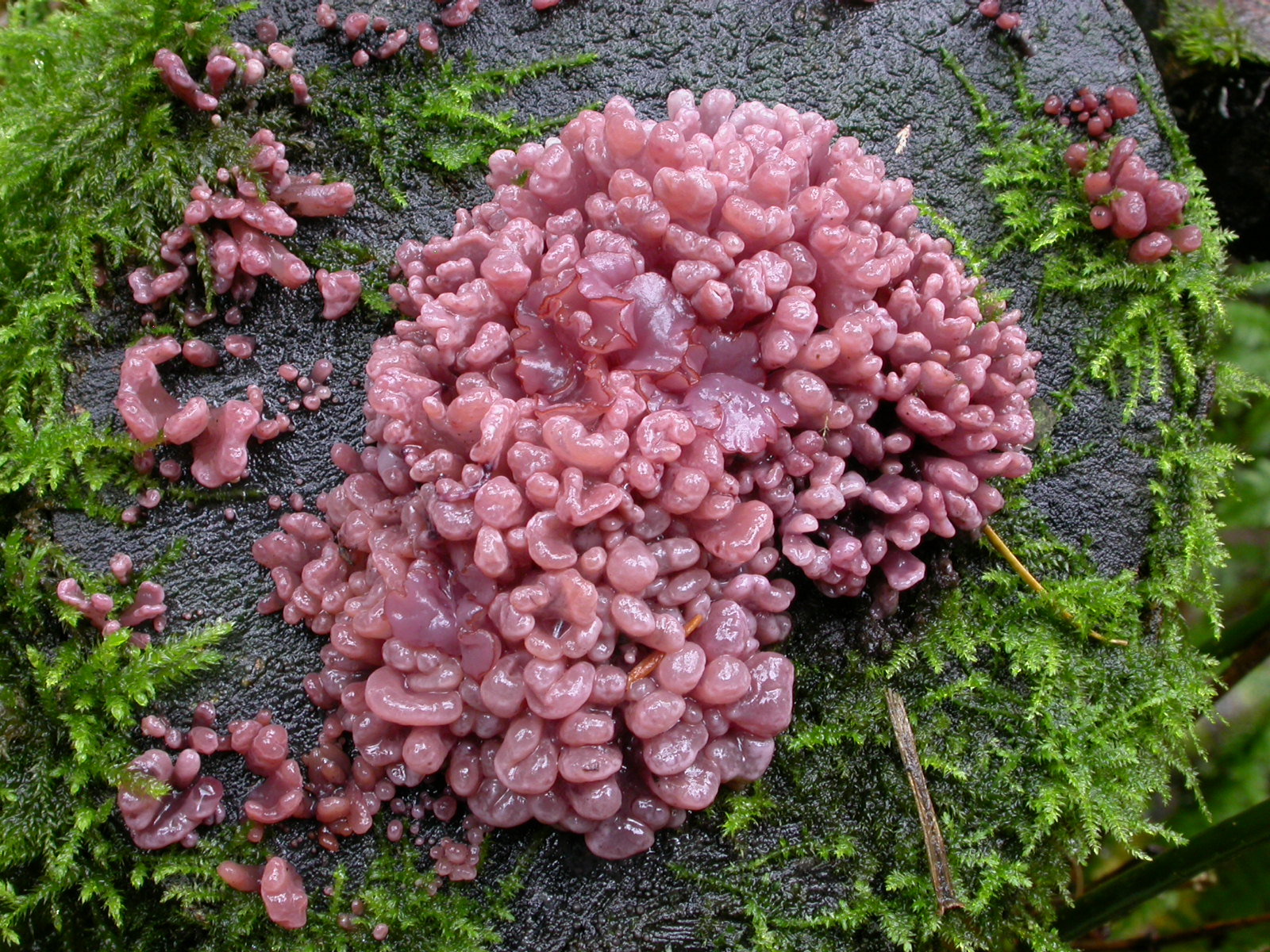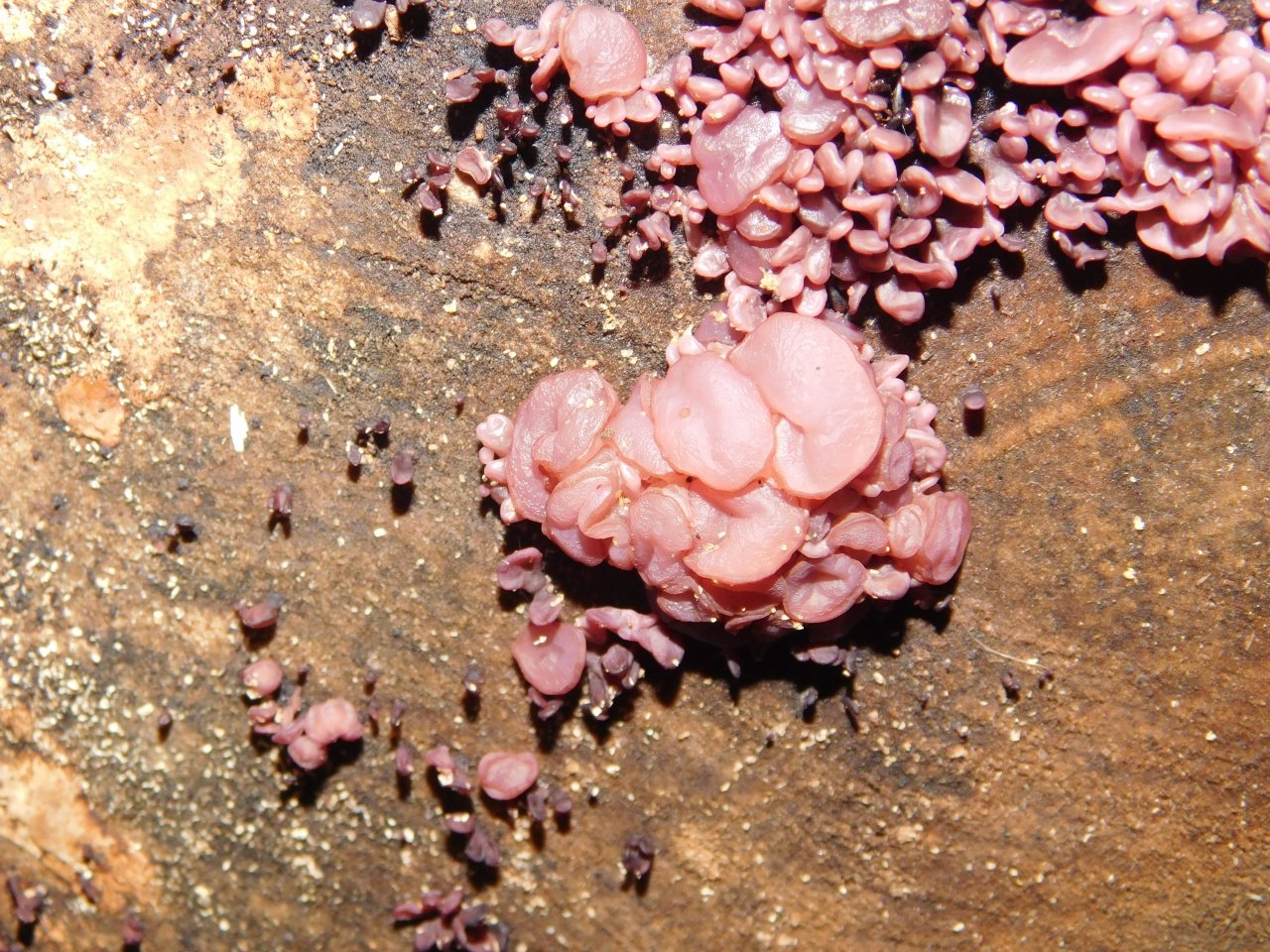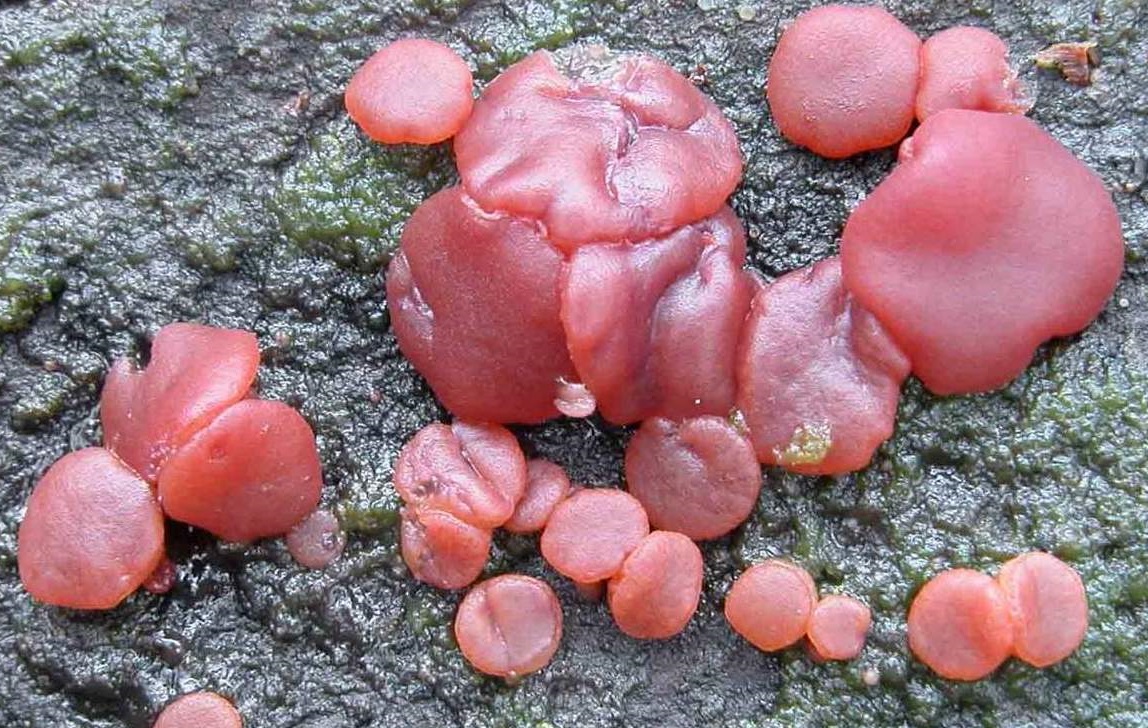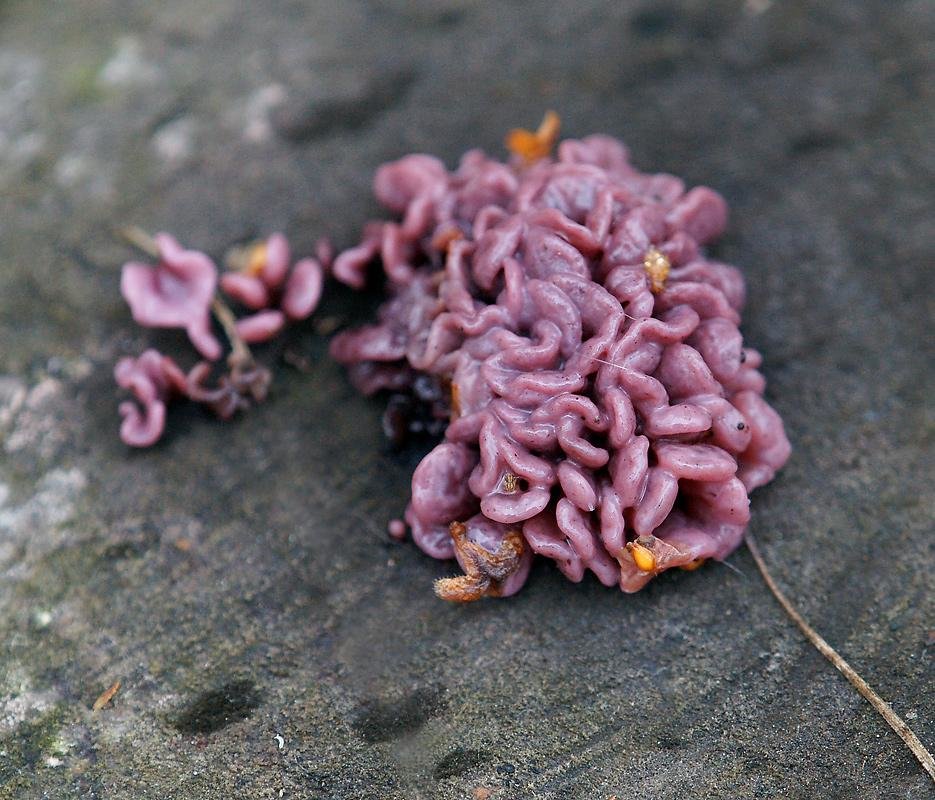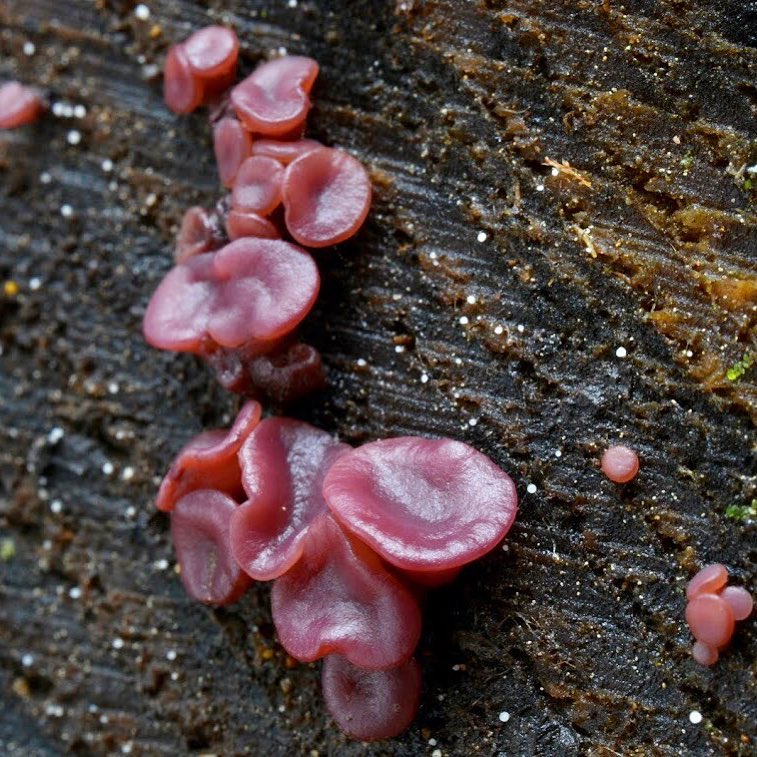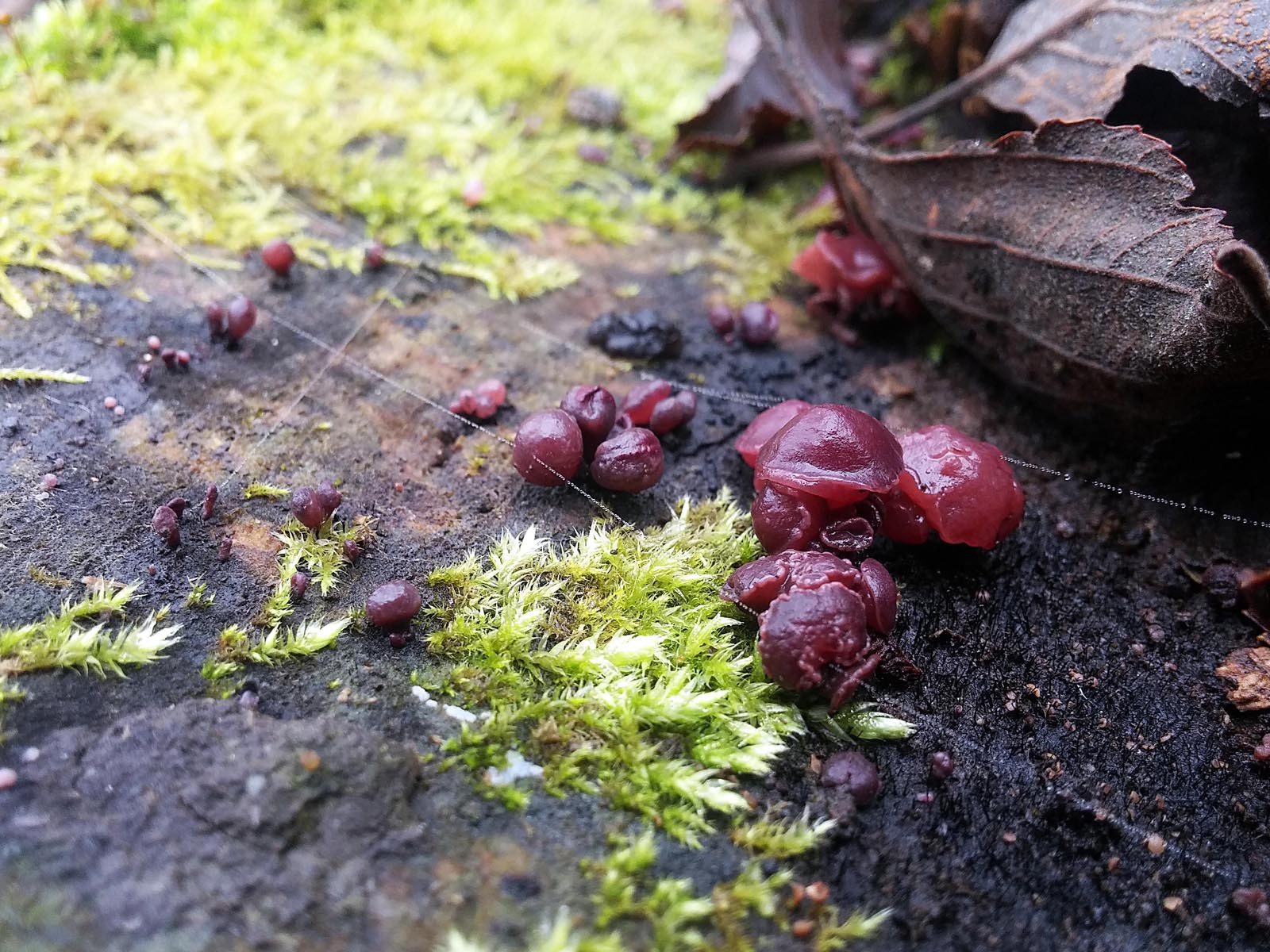Synonyms
- Bulgaria sarcoides (Jacq.) Fr., 1821
- Chlorospleniella sarcoides (Jacq.) Kuntze, 1891
- Coryne sarcoides (Jacq.) Tul., 1865, nom. illeg.
- Helvella purpurea Schaeff., 1774
- Helvella sarcoides (Jacq.) Dicks., 1785
- Lichen sarcoides Jacq., 1781basionym
- Octospora sarcoides (Jacq.) Gray, 1821
- Ombrophila sarcoides (Jacq.) P. Karst., 1871
- Peziza porphyria Batsch, 1783
- Peziza sarcoides (Jacq.) Pers., 1801
- Peziza tremelloidea Bull., 1791
- Sarcodea sarcoides (Jacq.) P. Karst., 1871, nom. inval.
- Tremella sarcoides (Jacq.) With., 1796
Anamorphs:
- Acrospermum dubium Pers., 1797basionym
- Coryne sarcoides (Fr.) Bonord., 1851
- Coryne sarcoides var. dubia (Pers.) Corda, 1838
- Denrdrodochium sarcoides (Fr.) Fautrey, 1896
- Pirobasidium sarcoides (Fr.) Höhn., 1902
- Tremella acrospermum Nees, 1817
- Tremella amethystea Bull., 1791
- Tremella dubia (Pers.) Pers., 1801
- Tremella dubia var. amethystea (Bull.) Pers., 1801
- Tremella sarcoides Fr., 1821
Cultural-historical and other interesting information
In 2008, during experiments with A. sarcoides, its ability to form a mixture of volatile substances was established, which includes from 6 to 9 carbon alcohols, ketones and octanes. The mixture was named "mycodiesel" because of its great similarity in composition to automotive fuel.
A genetic analysis of this unique ability of the fungus is currently underway.
Description. This marsupial fungus forms large, beautifully colored colonies of individual fruiting bodies (apothecia) gradually merging with age. A single fruit body 0.5-1.2 cm high, at first spatulate, rounded triangular, narrowed towards the base, about 1 cm in diameter.Mushroom bodies are goblet, cupped or irregularly folded, slightly convex or depressed, funnel-shaped with a bent edge, in a close group - flattened-depressed, with a folded funnel, matte, with a weakly pronounced, narrowed, sometimes curved leg about 0.3 cm in diameter, coarse on the underside. The color of the fruit bodies is various shades of lilac: red or gray-lilac, brownish-violet. The pulp is fleshy, dense gelatinous, without pronounced taste and smell.
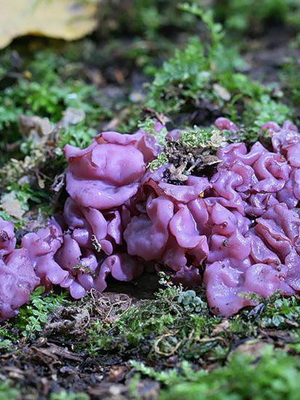
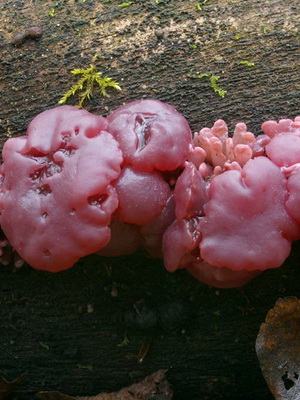
It is found on dead and rotting wood, stumps and trunks of deciduous trees (more often on birch), prefers fresh cuts, grows in tight, sometimes very large groups. Fruiting from September to the end of November, throughout the forest zone of Russia, not very often.
Similar species. Pure neobulgaria, in which there are groups of fruiting bodies with a lilac or purple tint (Neobulgaria pura var. Foliacea), is distinguished by the significantly smaller size of such groups and flattened, even on top of cup-shaped apothecia (individual fruit bodies). Ascocoryne cylichnium is distinguished by apothecia of a more regular saucer-cupped shape. It differs from various tremors in the color of fruit chalk.
Pharmacological and medical properties. The antibiotic ascocorin of terpenylquinone nature (benzoquinone derivative) was found in ascocorin meat. This finding aroused great interest, since terpenylquinones are widespread among basidiomycetes, while they are not found in marsupials, to which Ascocorin belongs. This pigment, dissolved in alcohol, acquires a beautiful lilac-violet color, characteristic of the fruiting bodies of the fungus. Ascocorin inhibits the growth and development of gram-positive bacteria.
The mushroom is not considered edible, although hardly anyone has tested this given its size.
Description
The fruiting body is 0.5-2 cm in diameter, at first spherical, then cushion or saucer-shaped, sessile or on a poorly developed false pedicle. The inner spore-bearing surface (hymenophore) is smooth or wrinkled, lilac-reddish to pinkish-lilac. The external sterile surface is also pinkish-lilac, usually smooth, sometimes fine-haired.
The pulp has a rubbery-jelly-like consistency, tasteless and odorless, pinkish-lilac.
Spores are whitish in mass, 11-18 × 3.5-5 microns, elliptical, sometimes asymmetric, with smooth walls, when ripe with one septum. The paraphysis is cylindrical, branched, septate.
The mushroom has no nutritional value, it is considered inedible.
Similar views edit code
Ascocoryne cylichnium (Tul.) Korf, 1971 differs from the teleomorph stage in larger apothecia with a more uneven sterile side in adult fungi, larger spores (18-30 × 4-6 microns) with several septa and unbranched paraphysis. Anamorph is not developed in this closely related species.


